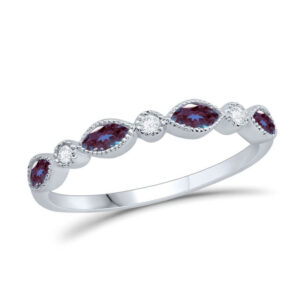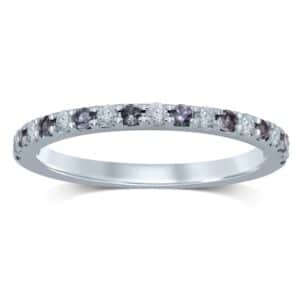Home / News & Events / Alexandrite & Pearl: Everything You Need to Know About June’s Birthstones
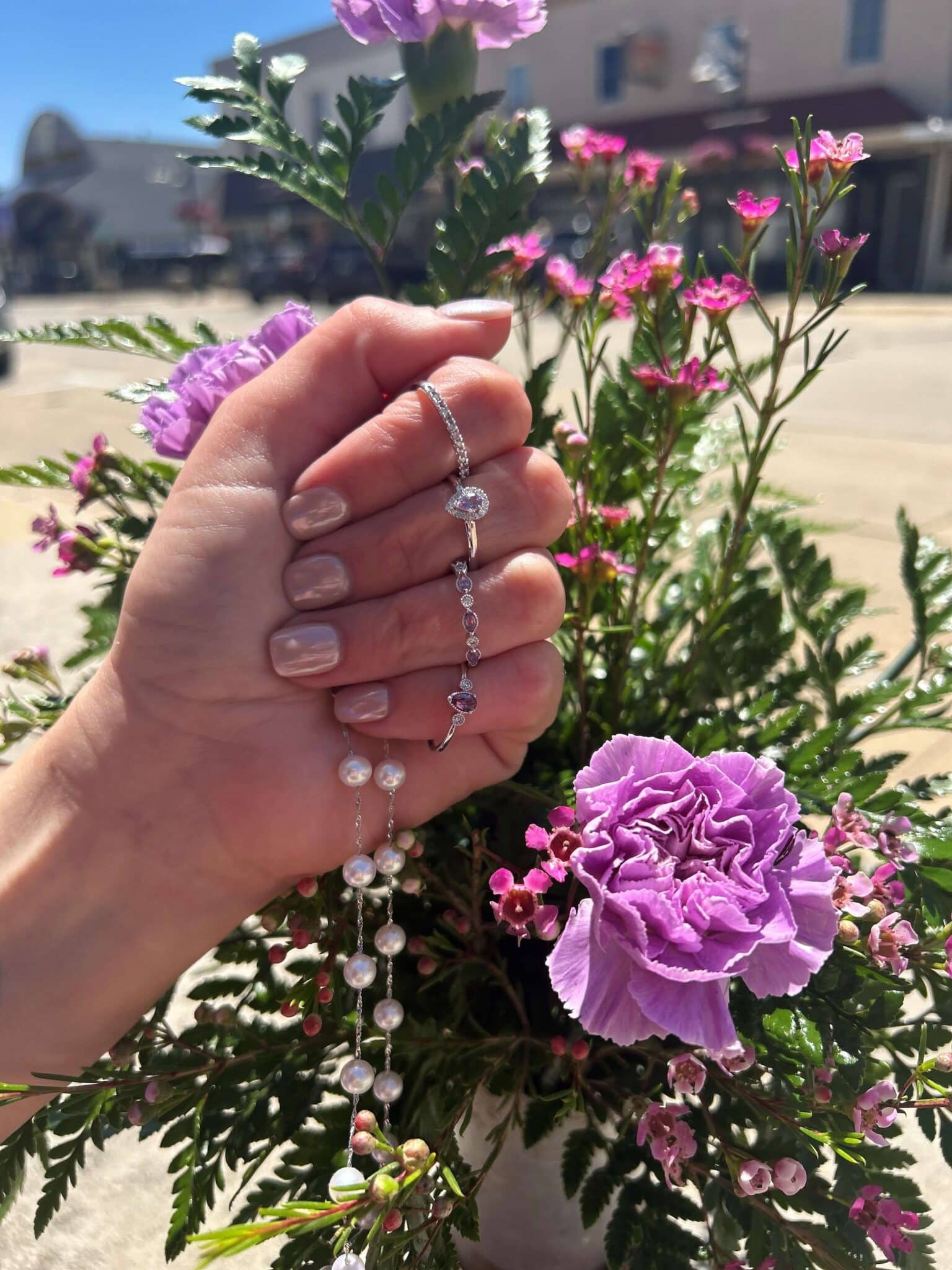
Alexandrite and pearl are June’s traditional birthstones! These two gemstones are incredibly different, however they both make gorgeous additions to any jewelry box.
Alexandrite
Alexandrite is a type of chrysoberyl mineral.2
Chrysoberyl minerals are comprised primarily of the elements beryllium, aluminum, and oxygen.
Alexandrite can appear to be different colors in different lightings.
If you look at an alexandrite in sunlight, it’ll appear green. However, if you look at the stone in the light of an incandescent lightbulb, it’ll look red. The presence of the element chromium within this gemstone is partly responsible for this change in color.1 Depending on where an alexandrite is mined, its red and green colors can be drastically different from alexandrite mined in another area.
Alexandrite was first found in the Ural Mountains in Russia in the 1830s.3
In fact, alexandrite gets its name from Russian Czar Alexander II, who reigned after the discovery of this gemstone.3
Alexandrite mines are located around the world, including in countries like Brazil, Sri Lanka, Madagascar, and Myanmar.3
Russia is no longer a main producer of this gemstone; However, Russia still mines alexandrite in smaller quantities.3
Alexandrite scores an 8.5 out of 10 on the Mohs hardness scale.
These stones rate an 8.5 on the Mohs hardness scale. This means that it’s difficult to break or scratch alexandrite. However, this doesn’t mean that it’s impossible to break or scratch alexandrite, so some caution is still necessary when wearing this gemstone.
The best way to clean your alexandrite jewelry is by scrubbing it with warm, soapy water using a soft toothbrush.
However, you can also clean these gemstones with Ultrasonic cleaners and steamers as long as the stones aren’t damaged in any way.
Pearls
Pearl is the only birthstone that originates inside of a living organism.
This gemstone can be found in saltwater and freshwater oysters and mussels.4
The color of a pearl is determined by the mollusk that produced it.
Both pearls and the lining of the shell of their mollusk are made from nacre. Therefore, the pearl produced inside the mollusk will have the same color as the lining of the mollusk’s shell.5 Often, this means that the pearl be white or cream in color. However, natural pearls can also be grey, black, blue, and pink, among other colors. Sometimes, pearls are dyed to create colors that don’t occur in nature.
Very few pearls used in jewelry making were created naturally by mollusks.7
Instead, most pearls are cultured. In 1893, Kokichi Mikimoto produced the first cultured pearls.5 Culturing pearls is a practice that has been occurring for over a century, and continues to be popular today.
Akoya pearls, Tahitian pearls, South Sea pearls, and freshwater pearls are all types of cultured pearls.
Cultured pearl production occurs in many different countries around the world. For example, while the mollusks that create Akoya pearls are from Japan, these mollusks can also survive in Korea, China, the Caribbean, as well as several other locations. You can primarily find Tahitian pearls in the French Polynesian islands. Australia, Indonesia, Myanmar, as well as other countries house South Sea pearls. Freshwater pearls originate from China, Japan, as well as the United States in Tennessee. Most freshwater pearls, however, are from China.5
You should be extra cautious with your pearl jewelry.
These gemstones rate a 2.5 to 3 on the Mohs hardness scale, indicating they can be easily scratched and damaged. Since pearls are so easy to scratch, you should take extra care when wearing pearl jewelry, especially pearl rings or bracelets.
Did you know that you shouldn’t place your pearls in plastic bags? Not only are pearls susceptible to scratches, they’re also extremely sensitive to chemicals. Chemicals within plastic can react with pearls, harming this gemstone. For this same reason, you should never wear your pearls while putting on hair spray or other hair care products, lotion, or makeup.
You shouldn’t wear this gemstone every day.
Because pearls are so delicate, we recommend not wearing your pearl jewelry every day, especially while doing activities that may cause you to bump or scrape your pearls against anything.
When you’re not wearing your pearls, make sure they don’t touch each other or another surface to avoid scratches. To do this, you should wrap them in cloth.
We recommend cleaning your pearls gently.
To clean your pearl jewelry, take a slightly damp cloth and gently wipe the pearls. You should also clean these gemstones after every time you wear them to ensure they stay as beautiful as possible for as long as possible.
Pearls are the perfect 3rd and 30th wedding anniversary gifts.5
Traditionally, a husband will give his wife pearl jewelry as a gift on their 3rd and 30th wedding anniversaries.
Moonstone: June’s Third Birthstone
Moonstone is an alternative birthstone for June.
Moonstone is comprised of the minerals orthoclase and albite.8 Often, moonstone will have patches of blue or white that appear and disappear depending on the angle you’re observing this gemstone at.
Countries all over the world mine moonstone, including Sri Lanka, India, and Madagascar. New Mexico, North Carolina, and Virginia in the United States also produce moonstone.4
Shopping for Alexandrite & Pearl Jewelry at Necker’s Jewelers
We have a large selection of alexandrite and pearl jewelry at our stores in Davenport and DeWitt, IA, and on our website.
-
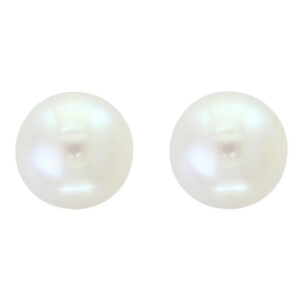 PEARL STUD EARRINGS$159.00
PEARL STUD EARRINGS$159.00 -
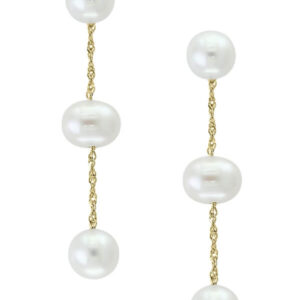 FRESHWATER PEARL DROP EARRINGS$199.00
FRESHWATER PEARL DROP EARRINGS$199.00
Sources
1. Alexandrite Birthstone Overview | June Birthstones (americangemsociety.org)
2. Alexandrite Value, Price, and Jewelry Information – International Gem Society
3. Geographic Origin Determination of Alexandrite | Gems & Gemology (gia.edu)
4. June Birthstones | Pearl, Alexandrite, Moonstone Birthstones | GIA
5. June Birthstone: Pearl – International Gem Society
6. Pearl Gemstone Overview | Learn About the Pearl – June’s Birthstone (americangemsociety.org)
7. Pearl Gemstone | Uncover the History of What the Pearl Means (americangemsociety.org)


